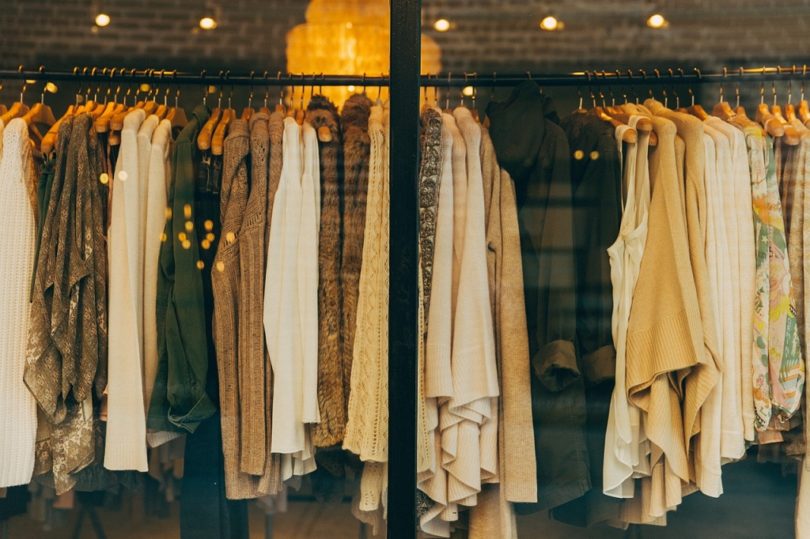A Novice's Guide to Browsing the Boutique Fashion Scene
A Novice's Guide to Browsing the Boutique Fashion Scene
Blog Article
A Deep Dive Into the Globe of High-Fashion Runways: Recognizing Clothing as Art
High-fashion paths have emerged as arenas where clothes transcends its practical beginnings, evolving right into a sophisticated type of creative expression. Developers, a lot like masterful musicians, weave intricate stories via kind, color, and fabric, redefining and challenging typical norms elegance criteria. These programs are a lot more than plain display screens; they are immersive experiences, where every stitch and seam narrates rich with cultural significance and avant-garde development. As we explore these sartorial spectacles, we must contemplate: what duty does style play fit societal worths, and just how does it mirror the ever-changing tapestry of human emotion and identification?
The Evolution of Runway Shows
The trajectory of path programs has changed substantially over the decades, progressing from unique market events to captivating spectacles that blend style with art. Typically, path programs made love affairs, held in ateliers or tiny venues, mostly attended by buyers and sector insiders. These early discussions focused on the garments' workmanship and industrial feasibility, using a straight and practical display of seasonal collections.
As the fashion market broadened, the nature of runway programs started to transform. The 1970s and 1980s noted a transforming factor, with developers looking for to identify themselves through even more staged discussions.
In recent times, technology and social media have additionally transformed runway shows, making them easily accessible to a worldwide audience. Livestreaming and digital platforms have equalized style, enabling lovers worldwide to witness these events in real-time (boutique fashion). This development mirrors a more comprehensive cultural change, where high-fashion paths function as a dynamic intersection of development, style, and efficiency
Designers as Enthusiast Artists
Designers in the high-fashion industry have actually blurred the lines in between functional garment production and the conceptual world of art. By welcoming creative self-controls such as sculpture, painting, and progressive installments, designers craft garments that test conventional style norms and boost them to art forms.
Visionary designers attract ideas from a myriad of resources, consisting of abstract art, historical recommendations, and personal stories. They possess a special capacity to visualize and emerge concepts that press the boundaries of standard style, frequently redefining visual paradigms in the procedure. This creative ingenuity is showcased with remarkable silhouettes, cutting-edge products, and detailed workmanship, which welcome viewers to experience fashion as greater than just wearable items.
Additionally, the path functions as a canvas for these artists, where lighting, music, and established layout coalesce to create immersive experiences. These presentations are not merely display screens of garments yet are orchestrated performances that stimulate feeling and prompt idea, verifying the developer's duty as a real musician in the modern social landscape.
Social Impacts in vogue
Cultural tapestry weaves its complex patterns into the fabric of style, affecting designers worldwide. The dynamic interchange of social stories, traditions, and icons educates and motivates collections that poise high-fashion runways.
The influence of culture on fashion is usually seen in the reinterpretation of standard garments special info and patterns. As an example, the use of Japanese kimonos, Indian saris, or African prints in contemporary style reflects a mix of cultural credibility and modern looks. Developers such as Valentino's Pierpaolo Piccioli and Alexander McQueen's Sarah Burton have been understood to include rich social themes right into their couture collections, equating history right into wearable art.

Technology in Textile and Layout
Innovation in textile and style regularly reshapes the landscape of high-fashion, important site pressing borders and redefining opportunities. Designers are significantly checking out the combination of innovation, such as 3D printing, which permits for the production of complicated structures that were previously unimaginable.
The fashion sector is witnessing a rise in the usage of green products, acquired from recycled plastics, natural fibers, and also biodegradable elements. Developers are embracing these products to craft garments that are both aware and aesthetically striking of their ecological impact.
In terms of style, speculative kinds and avant-garde silhouettes are constantly revolutionizing the path. By incorporating non-traditional products and innovative techniques, designers grow garments that obscure the line between style and art, establishing new standards for creative thinking and expression in the high-fashion round.
Impact of Fashion on Society
Fashion possesses an extensive influence on culture, serving as both a reflection of social identity and a catalyst for social change (boutique fashion). Via its development, fashion has mirrored societal changes, encapsulating the zeitgeist of numerous ages.
Additionally, fashion has the power to bridge social spaces, fostering understanding and recognition amongst diverse groups. As globalisation speeds up, the cross-cultural exchange of style ideas becomes progressively significant, promoting inclusivity and diversity. The rise of streetwear, stemming from city subcultures, illustrates exactly how fashion can transcend socio-economic limits, providing people a means of self-expression and empowerment.
Basically, style is not just concerning looks; it is a dynamic pressure that influences worths, mindsets, and social development (boutique fashion). By continuously engaging with social and cultural currents, fashion continues to be an essential component of the collective human experience

Final Thought
High-fashion paths act as dynamic sectors where clothing transcends functionality to become a meaningful art form. Designers, akin to visionary artists, orchestrate collections that mirror identity, emotion, and cultural stories, challenging traditional aesthetic appeals. The combination of ingenious material and layout, paired with intricate collection styles, lights, and music, develops immersive experiences that commemorate multiculturalism. This intersection of fashion and virtuosity not just mesmerizes audiences worldwide but additionally affects societal assumptions and advertises a much deeper admiration for multiculturalism.

Social tapestry weaves its elaborate patterns right into the fabric of style, affecting developers globally.Fashion possesses an extensive influence on society, offering as both a reflection of cultural identity and a driver for social modification.
Report this page